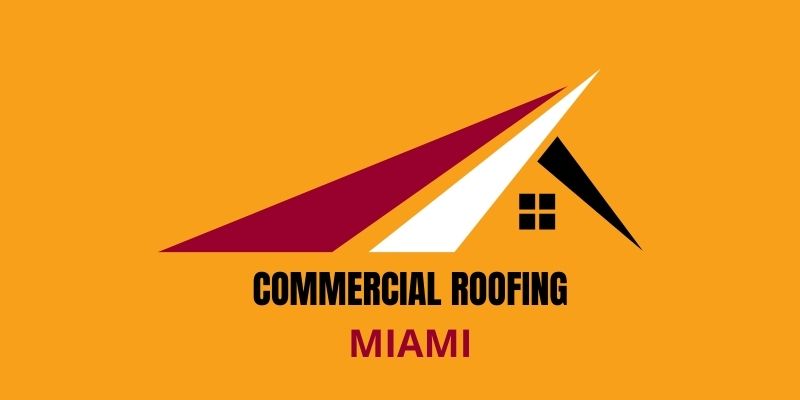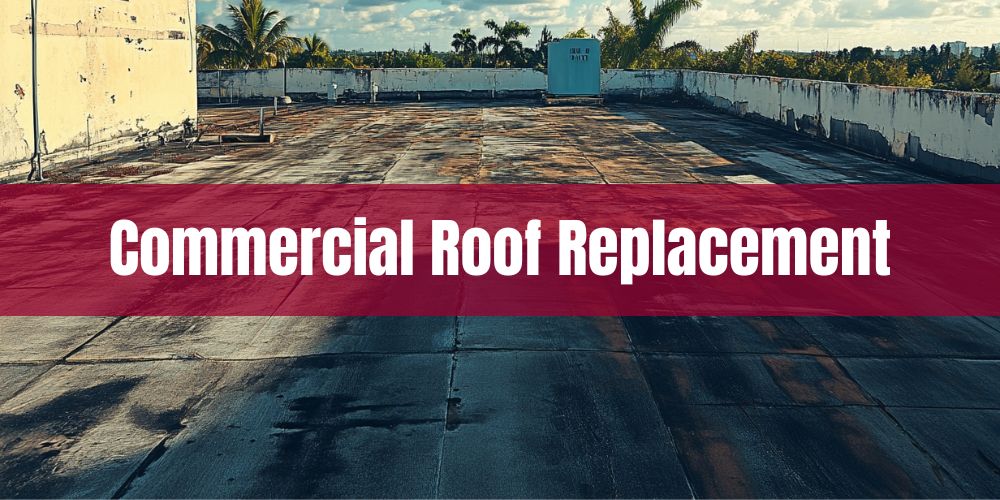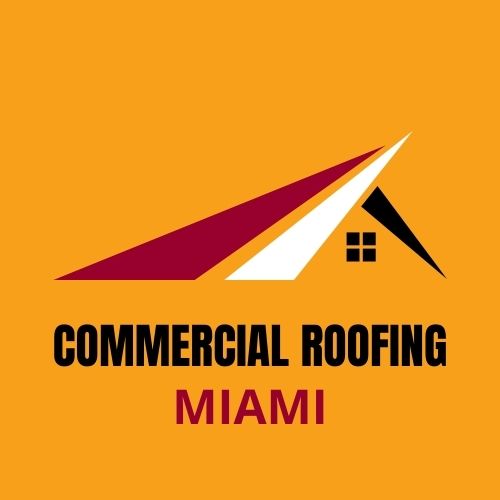Commercial roof replacement involves the complete removal and installation of new roofing materials on commercial buildings. This process is crucial for maintaining the structural integrity, safety, and energy efficiency of the building. Unlike minor repairs, a full replacement addresses extensive damage or wear that can no longer be effectively patched or coated. Materials commonly used for commercial roof replacement include TPO, PVC, EPDM, metal, and modified bitumen, all of which are chosen for their durability and resistance to harsh weather conditions. Commercial Roofing Miami provide commercial roof replacement services across the Miami, Florida area.
What Is Commercial Roof Replacement?
Commercial roof replacement is the process of removing an existing roof system on a commercial building and installing a new roofing system in its place. This process is often necessitated by factors such as significant roof damage, aging, or the desire to improve energy efficiency and aesthetics. It involves multiple steps, including the assessment of the current roof's condition, selecting appropriate roofing materials, and ensuring compliance with local building codes and regulations. Common types of roofing systems used for commercial replacements include TPO, EPDM, and modified bitumen, each offering unique benefits such as durability or energy efficiency. Proper installation is critical to ensure the longevity of the new roof, involving specialized techniques and equipment tailored to the specific roofing material selected. Regular maintenance post-replacement is also essential to extend the life of the new roof and to protect the building's interior from weather-related damage.
In Miami, Florida, commercial roof replacement requires special consideration of the local climate, which includes high temperatures and high humidity levels. Given Miami's vulnerability to hurricanes, selecting roofing materials and installation methods that withstand strong winds and heavy precipitation, like reinforced membranes and robust fasteners, is essential for ensuring roof durability and safety.
Have a question about an upcoming project?
What Are The Signs You Need A Roof Replacement?
If your roof shows signs of extensive damage or wear, it may need replacing. Factors such as age, leaks, and visible damage play crucial roles in determining roof replacement necessity. Ignoring these signs can lead to more severe problems like structural damage and increased repair costs.
- Age of Roof: Typically more than 20–25 years old needs inspection.
- Membrane Damage: Physical deterioration of the waterproofing layer.
- Leaks and Water Damage: Water stains or mold suggest serious issues.
- Sagging Roof Deck: Structural issues causing debt or bowing need prompt attention
- Increased Energy Bills: Poor insulation and ventilation may necessitate replacement
1. Age of Roof: Typically more than 20–25 years old needs inspection
A roof that is typically more than 20–25 years old is likely to require an inspection to assess its condition and potential need for replacement or repair. When determining the signs that indicate the need for a roof replacement, the age of the roof is a crucial factor, particularly for commercial properties. As roofing materials age, they begin to lose their structural integrity and protective qualities, making them more susceptible to leaks and other damage, which are primary indicators for replacement consideration.
Consistent inspections for older roofs can help identify developing issues before they lead to significant damage, saving time and expense. Ensuring regular maintenance and repairs for aging commercial roofs helps prolong their lifespan and maintain their functionality, thereby reducing the likelihood of sudden failures. Furthermore, understanding the potential risks of aging roofs, such as weakened support structures, is essential for maintaining workplace safety and protecting the building's contents.
2. Membrane Damage: Physical deterioration of the waterproofing layer
Membrane damage refers to any physical deterioration of the waterproofing layer on a commercial roof—such as cracks, punctures, blisters, or seam separations—that compromise its ability to keep water out. In Miami’s hot, humid, and hurricane-prone environment, these failures are accelerated by constant UV exposure, extreme heat cycles, and high winds that stress attachment points and seams. Foot traffic from HVAC maintenance and wind-blown storm debris also contribute to degradation. Once breached, the membrane allows moisture to infiltrate the insulation layer, reducing energy efficiency and enabling hidden mold or corrosion to develop. TPO, PVC, and modified bitumen systems—commonly used across South Florida—require close inspection by professionals, particularly before and after storm season, to detect early-stage damage not visible from ground level. Prompt repairs are essential not only to maintain watertight performance but also to meet local building code requirements for wind uplift resistance and severe weather protection.
3. Leaks and Water Damage: Water stains or mold suggest serious issues
Leaks and water damage occur when moisture infiltrates a commercial roof, leading to stains or mold growth, which indicate potential structural weaknesses requiring immediate attention. Water stains or mold on a commercial roof can signal underlying damage or roof membrane failures that necessitate a roof replacement. Ignoring these signs could result in further structural damage and costly repairs, making it crucial to address them promptly to maintain the building’s integrity.
Regular roof inspections can help detect early signs of leaks or water damage, allowing for timely prevention of more severe damage. Utilizing high-quality roofing materials and systems designed for waterproofing can further mitigate the risk of water infiltration. Proper maintenance, including clearing debris from drainage areas, ensures that water does not pool and exacerbate potential leakage issues.
4. Sagging Roof Deck: Structural issues causing debt or bowing need prompt attention
A sagging roof deck in commercial buildings indicates potential structural issues that can lead to serious damage if not addressed quickly, such as excessive load, deterioration of materials, or water damage causing the deck to bend or bow. Recognizing a sagging roof deck is crucial because it's a sign that a roof replacement is likely necessary to prevent further structural compromise. Ignoring these signs may result in widespread damage and increased repair costs, thus shortening the roof's lifespan significantly.
To address sagging roof decks effectively, a thorough inspection by roofing professionals is essential to identify the underlying causes and establish an appropriate repair or replacement plan. Regular maintenance and monitoring can prevent minor issues from escalating into significant structural problems, ensuring the roof’s safety and functionality. Quick intervention not only safeguards the building’s integrity but also extends the roof's service life and optimizes performance.
5. Increased Energy Bills: Poor insulation and ventilation may necessitate replacement
Increased energy bills due to poor insulation and ventilation in a commercial roof occur when inadequate thermal barriers compel heating and cooling systems to work harder, leading to higher electricity costs. Poor insulation and ventilation are clear indicators that a commercial roof may be approaching the end of its functional lifespan, necessitating replacement. High energy bills signal inefficiencies in maintaining indoor temperatures, which not only inflate operational costs but also degrade the overall comfort of building occupants.
Replacing the commercial roof with improved insulation and ventilation can restore energy efficiency by ensuring better temperature regulation, especially vital in regions with extreme weather conditions. Upgraded roofing systems often utilize advanced materials that enhance thermal performance, mitigating heat loss in winter and ensuring cooler interiors in summer. Additionally, these modern roofing solutions provide a long-term economic advantage by reducing energy consumption and contributing to sustainable building practices.
How Does Miami's Climate Affect Commercial Roof Lifespan?
Miami's climate, characterized by intense sun, heavy rainfall, and humidity, significantly shortens commercial roof lifespan. The high UV exposure accelerates material degradation, while frequent storms and high humidity contribute to structural wear and moisture-related issues. Choosing weather-resistant materials and regular maintenance is crucial for prolonging roof life in such a climate.
- UV Exposure: Prolonged sunlight degrades roofing materials, leading to early deterioration.
- Heavy Rainfall: Frequent rain increases risk of leaks and material erosion over time.
- High Humidity: Excessive moisture fosters mold growth and compromises structural integrity.
- Hurricane Threats: Strong winds can cause severe damage or complete roof failures.
- Temperature Fluctuations: Variations can cause material expansion, contraction, and subsequent cracks.
1. UV Exposure: Prolonged sunlight degrades roofing materials, leading to early deterioration.
UV exposure is the process by which prolonged sunlight breaks down roofing materials, causing them to weaken and deteriorate prematurely. Miami's intense sunlight and warm climate substantially affect commercial roofs by accelerating UV exposure, which can shorten the lifespan of materials like modified bitumen. The constant impact of UV rays can lead to cracking, brittleness, and a loss of waterproofing capabilities in the roof, necessitating more frequent repairs and maintenance.
To mitigate the impact of UV exposure on commercial roofs in Miami, it is crucial to apply UV-resistant coatings, which can help reflect sunlight and reduce heat absorption. Regular inspections can catch early signs of UV-induced damage, such as cracking or granule loss, allowing for timely interventions. Maintaining the roof's protective layers and making prompt repairs ensure its structural integrity is preserved, thus extending its lifespan and performance in challenging climates.
2. Heavy Rainfall: Frequent rain increases risk of leaks and material erosion over time.
Heavy rainfall refers to prolonged and intense precipitation that can lead to water penetration and degradation of roofing materials, compromising the roof's integrity and effectiveness. Miami's humid and rainy climate can significantly shorten the lifespan of commercial roofs by exacerbating leak issues and expediting material erosion. This frequent exposure to moisture challenges the durability of all roofing systems, increasing maintenance needs and costs.
To combat the effects of heavy rainfall, commercial roofing systems in Miami should incorporate high-quality waterproof membranes and a well-designed drainage system to facilitate quick water removal. Regular inspections and timely maintenance are essential to addressing any emerging leaks or erosion signs before they develop into serious problems. By using durable, water-resistant materials and protective coatings, businesses can enhance the resilience and longevity of their roofing systems against Miami's rainy climate.
3. High Humidity: Excessive moisture fosters mold growth and compromises structural integrity.
High humidity refers to the abundance of moisture in the air, which can cause mold growth and weaken the structural integrity of commercial roofs. Miami's climate, characterized by high humidity levels, presents a significant challenge to the longevity of commercial roofs. The persistent moisture in the air encourages mold proliferation and can penetrate roofing materials, leading to premature degradation and compromising structural stability.
Regular inspections and moisture management practices are crucial to mitigate the impact of high humidity on commercial roofs. Roof coatings and membranes that resist moisture absorption should be prioritized to better withstand Miami's climatic conditions. Additionally, proper ventilation systems can help reduce humidity levels on the roof, minimizing the potential for mold growth and ensuring structural strength is maintained over time.
4. Hurricane Threats: Strong winds can cause severe damage or complete roof failures
The destructive force of hurricane winds can lead to significant structural damage or complete failure of commercial roofs, especially when the roofing system is inadequately designed to withstand such extreme conditions. Miami's climate, with its frequent hurricanes and tropical storms, presents significant challenges to maintaining the structural integrity of commercial roofs. During hurricane events, strong winds can easily lift roofing materials, exposing the underlying structure to water infiltration, causing leaks, and potentially leading to roof collapse if measures are not in place to counteract these forces.
To combat these challenges, commercial roofing systems in hurricane-prone areas like Miami should include enhanced fastening systems, high-wind rated materials, and proper design elements that can resist uplift forces. Regular inspections and maintenance are crucial to ensure that the roofing components, such as flashing and seams, remain intact and secure. Implementing wind-resistant upgrades can significantly enhance the ability of a commercial roof to survive the impact of hurricanes, thereby reducing repair costs and minimizing downtime for businesses.
5. Temperature Fluctuations: Variations can cause material expansion, contraction, and subsequent cracks.
Temperature fluctuations refer to the cyclical expansion and contraction of roofing materials due to changes in temperature, which can lead to stress, cracking, and structural damage over time. Miami's climate, characterized by high temperatures and humidity, can exacerbate these issues by causing more frequent and severe temperature fluctuations on commercial roofs. This consistent cycle of expansion and contraction can significantly reduce the lifespan of roofing materials by accelerating the formation of cracks and leaks.
To mitigate the effects of temperature fluctuations, using materials with high elasticity that can accommodate thermal movement is crucial. Additionally, selecting roofing systems that offer superior thermal resistance can help stabilize temperature fluctuations. Regular inspections and maintenance are essential to promptly address any damage and maintain the roof's structural integrity over time.
What Are The Best Materials For Miami Roof Replacements?
The best roofing materials for Miami include metal, concrete tile, and modified bitumen due to their durability and weather resistance. Miami's tropical climate, characterized by high humidity, intense UV exposure, and the threat of hurricanes, demands roofing materials that can withstand harsh conditions while providing energy efficiency and longevity. Replacing a roof in this region requires careful consideration of materials that not only protect against elements but also contribute to reducing cooling costs.
- Weather Resistance: Must withstand Miami's hurricanes, high winds, and heavy rainfall.
- Durability: Long-lasting materials that survive intense UV rays and humidity.
- Energy Efficiency: Capable of reflecting Miami's intense sunlight to reduce cooling costs.
- Mold and Mildew Resistance: Essential in Miami's high-humidity environment.
- Local Building Code Compliance: Meets Miami's strict building and safety regulations.
1. Weather Resistance: Must withstand Miami's hurricanes, high winds, and heavy rainfall
Weather resistance refers to a roofing system’s ability to endure extreme conditions—such as high-velocity winds, torrential rain, and hurricane-driven debris—without sustaining functional or structural damage. In Miami, where storm activity is frequent and severe, this is a critical factor in material selection for any commercial roof replacement or upgrade.
To meet these demands, commercial buildings typically rely on impact-resistant systems like reinforced metal panels, modified bitumen, or fully adhered single-ply membranes such as TPO or PVC. These materials are engineered to withstand uplift forces, wind-driven rain, and prolonged UV exposure. Roof assemblies must be designed and installed in compliance with Miami-Dade wind uplift requirements, often rated for resistance up to 150 mph. In addition to material strength, regular maintenance and professional inspections ensure long-term performance by identifying vulnerabilities before storm season. Proper fastening methods, edge securement, and drainage planning all contribute to a commercial roof’s ability to withstand extreme weather conditions.
2. Durability: Long-lasting materials that survive intense UV rays and humidity
Durability refers to a roofing material's ability to withstand prolonged exposure to harsh weather conditions, such as intense UV radiation and high humidity, without degrading in performance. The need for durable, UV-resistant roofing materials is paramount for commercial buildings, especially in climates like Miami, where intense sunshine and humidity are prevalent. Roofing materials that excel in durability ensure longevity and lower maintenance costs, making them ideal for regions subject to these aggressive weather patterns.
By selecting roofing materials that can endure prolonged exposure to UV rays and moisture, commercial properties in Miami can maintain their structural integrity and reduce the risk of leaks and water damage. Implementing UV-reflective treatments and coatings can further extend the lifespan of these materials, providing added protection against the elements. Regular maintenance and inspections are essential to address any potential issues before they become significant problems, ensuring the roofing system performs optimally over time.
3. Energy Efficiency: Capable of reflecting Miami's intense sunlight to reduce cooling costs.
Energy efficiency is the ability of a roofing material or system to reduce energy consumption, such as cooling costs, by reflecting rather than absorbing heat. In Miami's tropical climate, where the sun's intensity is exceptionally high, efficient energy reflecting roofs are not just an option but a necessity. By reducing the amount of heat absorbed, these roofing materials significantly lower the demand on cooling systems, facilitating energy conservation and cost savings.
Choosing energy-efficient roofing materials is vital for commercial buildings to maintain comfortable indoor temperatures, reduce operational costs, and promote environmental sustainability in Miami's urban landscape. Additionally, integrating cool roof technologies can contribute to reducing the urban heat island effect, thus enhancing the overall comfort and viability of urban living. Regular maintenance and upgradation of these energy-efficient systems ensure their effectiveness and longevity.
4. Mold and Mildew Resistance: Essential in Miami's high-humidity environment
Mold and mildew resistance in roofing means the ability of a material to withstand and prevent the growth of fungi in humid conditions. In Miami's high-humidity environment, roofs that lack mold and mildew resistance can quickly succumb to fungal growth, leading to structural damage and health hazards. Therefore, selecting roofing materials with mold and mildew resistance is critical for ensuring the long-term durability and safety of commercial buildings in such climates.
Commercial roofing systems in Miami need to incorporate materials like metal or certain treated membranes, which offer enhanced fungus resistance. Regular maintenance, including inspections and cleaning, also helps prevent the accumulation of debris and moisture that can promote mold growth. Investing in appropriate roofing materials and upkeep can protect businesses from costly repairs and potential health issues caused by mold and mildew infestation.
5. Local Building Code Compliance: Meets Miami's strict building and safety regulations
Local building code compliance ensures that a commercial roofing system adheres to Miami's rigorous standards for safety, structural integrity, and resilience against environmental factors. The importance of choosing roofing materials that align with Miami's building code is crucial for any commercial roof replacement project. Adherence to these codes not only prevents potential legal and financial repercussions but also guarantees that the roofing system can withstand Miami's unique climate challenges, including hurricanes and high humidity.
Selecting roofing materials that meet local regulations ensures that the roof is optimally designed to handle the stresses of the environment and contribute to long-term building safety. Contractors specializing in commercial roofing in Miami often prioritize materials like metal and reinforced bitumen, which are known for their durability and compliance with local codes. Regular inspections and adherence to updated building codes can prevent potential hazards, promote safety, and enhance the building’s market value.


